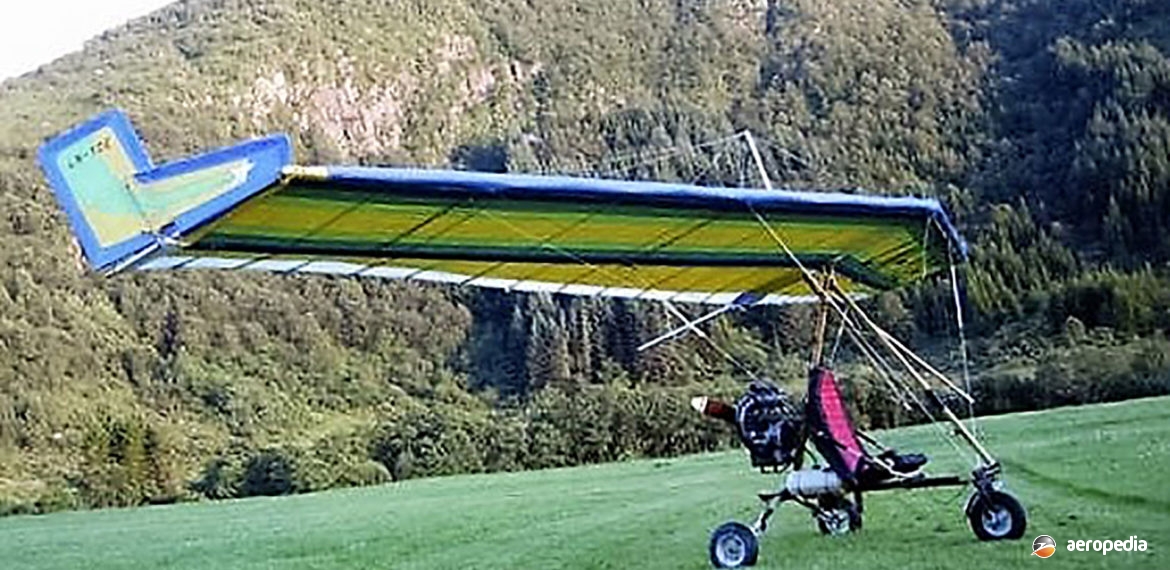Photograph:
A Manta Fledge (Author’s collection)
Country of origin:
United States of America
Description:
Single-seat ultralight rigid high-wing powered glider
Power Plant:
One 28 kw (38 hp) Kawasaki 440 two-cylinder in-line air-cooled engine
Specifications:
- Wingspan: 10.21 m (33 ft 5 in)
- Length: 3.05 m (10 ft)
- Height: 1.83 m (6 ft)
- Wing area: 14.6 m² (157 sq ft)
- Never exceed speed: 88 km/h (55 mph)
- Max level speed: 88 km/h (55 mph)
- Max cruising speed: 72 km/h (45 mph)
- Economical cruising speed: 56 km/h (35 mph)
- Stalling speed: 35 km/h (22 mph)
- Max rate of climb: 130 m/min (425 ft/min)
- Take off distance: 23 m (75 ft)
- Landing distance: 15 m (50 ft)
- Range: 209 km (130 miles)
- Fuel capacity: 18.9 litres (4.2 Imp gals)
- Empty weight: 98 kg (215 lb)
- Payload: 151 kg (334 lb)
- Loaded weight: 249 kg (549 lb)
History:
The Foxbat was one of a number of designs by William Armour which for some years was produced by Manta Products Inc of Oakland, California. It was an ultralight aircraft designed to meet US FAR 103 Ultralight Vehicle regulations and was supplied to prospective builders in kit form. It was a minimum type aircraft with a cable-braced high-wing, a single-seat with an open cockpit, a tricycle undercarriage and an engine in the pusher configuration.
It was built from aluminium tubing bolted together, the wing being covered in Dacron sailcloth. The aircraft has been described as a rigid-hang-wing glider and the controls are unconventional in that it uses a hang-glider type of control bar for weight shift control of pitch and roll, and this is augmented with wing-tip rudders for yaw, activated by hand controls on the control bar. The pilot, like in a hang-glider, sat in a sling seat. The nosewheel was steerable. The wing could be folded for transportation and storage.
Other variants on the theme were the Fledge III, which was the initial design; and the FX-3, a lower powered model with a 22 kw (30 hp) Cuyuna 430 engine or a Zenoah G-25 of 14 kw (20 hp).
Examples of the kit were imported to this region and completed, one becoming ZK-FRP (c/n MAANX/410/208) registered in July 1988 and which crashed at Muriwai in 1988, the registration being cancelled in September 1994.

